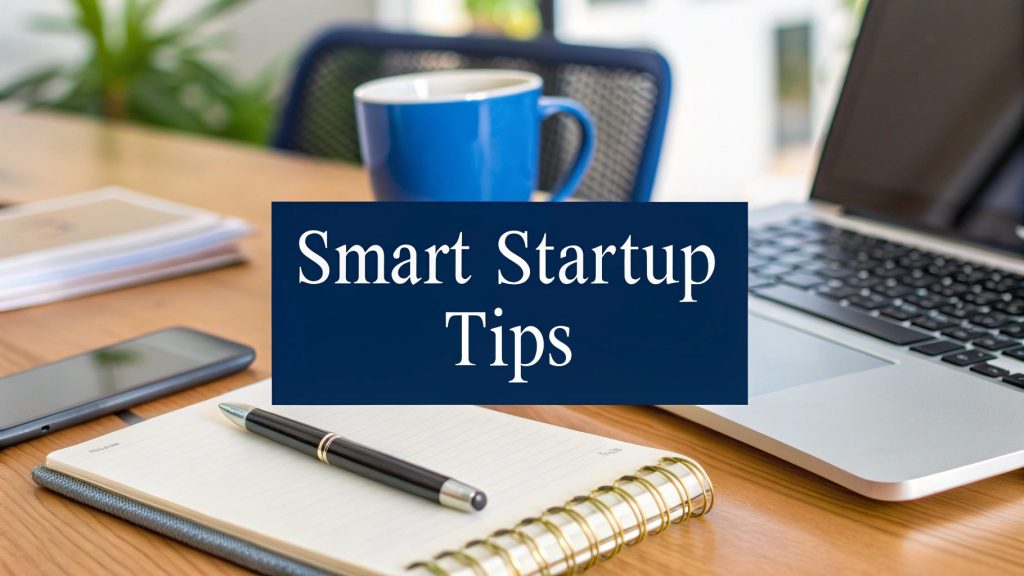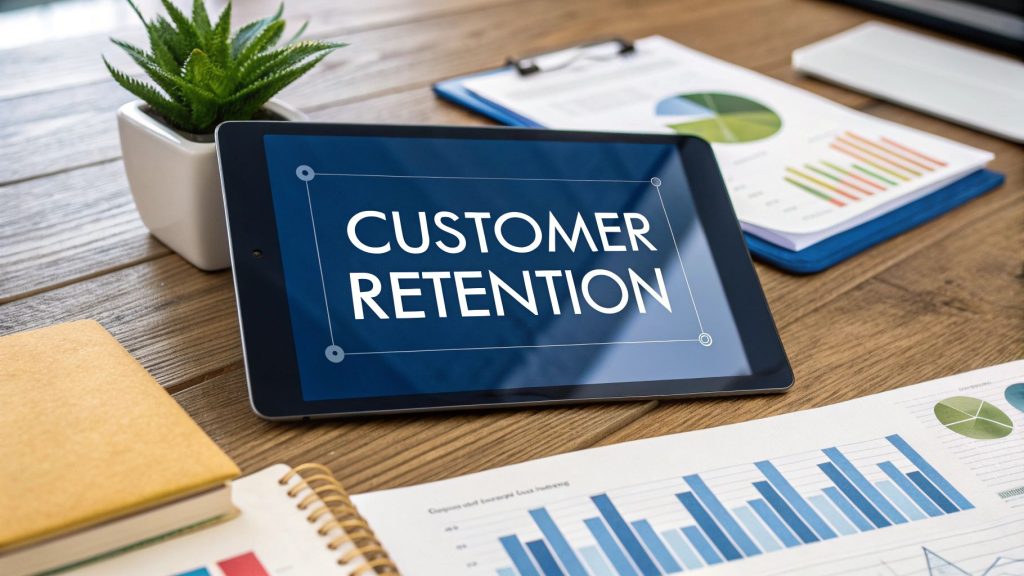Marketing Tips for Small Business
Marketing Tips for Small Business – In today’s competitive marketplace, effective marketing is not just an advantage; it’s a necessity for survival and growth. For small business owners, navigating the vast landscape of marketing strategies can feel overwhelming, especially when resources are tight. The good news is that you don’t need a colossal budget to make a significant impact. The key is to be strategic, focused, and consistent with your efforts.
This guide is designed to cut through the noise, providing a curated collection of proven and practical marketing tips for small business owners. We’ve moved beyond generic advice to deliver actionable insights you can implement immediately, whether you’re a sole trader trying to attract your first customers or an established company director aiming to scale. Our focus is on achieving maximum impact with minimal waste, ensuring every pound you invest in marketing works harder for your business.
We will explore a powerful mix of digital, local, and relationship-based tactics, covering everything from optimising your local search presence with Google My Business to building profitable partnerships and launching strategic pay-per-click campaigns. Each point is complete with real-world examples and step-by-step guidance to help you implement these concepts effectively. Forget theory and abstract ideas; this is a hands-on playbook. Let’s transform your marketing from a source of stress into your most powerful engine for sustainable growth.
1. Leverage Social Media Marketing
Social media marketing is no longer just an option for small businesses; it’s an essential channel for building brand awareness, nurturing customer relationships, and driving sales. Unlike traditional advertising, which often requires a significant budget, social platforms like Instagram, Facebook, TikTok, and LinkedIn offer a direct, cost-effective way to connect with your ideal audience where they already spend their time.

This direct access allows you to humanise your brand, gather real-time feedback, and build a loyal community around your products or services. For a small business, this level of engagement is invaluable. For example, a local bakery can use Instagram Stories to run a daily poll asking followers to vote on tomorrow’s “special bake,” creating both engagement and a sense of community ownership. A business-to-business (B2B) consultancy can use LinkedIn articles to break down a complex industry report, establishing thought leadership and generating qualified leads from professionals seeking expert insights. The key is to provide value, not just to sell.
How to Get Started
To make social media work for you, focus on a strategic, consistent approach rather than trying to be everywhere at once.
- Platform Selection: Don’t spread yourself too thin. If you sell visually appealing products like handcrafted jewellery, Instagram and Pinterest are ideal. If you offer professional services, LinkedIn is non-negotiable. Pinpoint where your target customers are most active and concentrate your efforts there.
- Content Consistency: Aim to post at least 3-5 times per week to stay top-of-mind. Use a content calendar to plan your posts in advance, mixing promotional content with educational, entertaining, and behind-the-scenes updates to keep your audience engaged. A practical example: a personal trainer could plan a week with a “Motivation Monday” quote, a “Workout Wednesday” short video tutorial, and a “Friday Q&A” session.
- Engage Authentically: Social media is a two-way street. Respond to comments and messages promptly, ask your followers questions, and engage with their content. This community-building effort fosters loyalty and turns followers into brand advocates.
- Utilise Platform-Specific Features: Master the tools each platform offers. Use Instagram Reels and TikTok videos for short-form video content, Facebook Groups to build a niche community, and LinkedIn Polls to gather industry insights.
By implementing these foundational marketing tips for small business, you can transform social media from a time-consuming task into a powerful engine for growth.
2. Implement Email Marketing Campaigns
Despite the rise of social media, email marketing remains one of the most powerful and profitable marketing channels available, offering an average return on investment (ROI) that consistently outperforms other digital strategies. It provides a direct line of communication to your audience, allowing you to nurture leads, retain customers, and drive repeat sales without being subject to the changing algorithms of third-party platforms.
This direct access is crucial for building lasting customer relationships. An e-commerce brand can use automated abandoned cart emails to recover lost revenue, while a local restaurant can send weekly specials to entice diners for a weekend visit. The key is that you own your email list; it’s a valuable business asset that you control, making it a stable and reliable foundation for your marketing efforts.
How to Get Started
A successful email strategy focuses on providing value and building trust, which turns subscribers into loyal customers.
- Build Your List with Incentives: People rarely give away their email address for nothing. Offer a compelling reason to subscribe, such as a 10% discount on their first order, a free downloadable guide (e.g., “5 Recipes for Busy Weeknights” from a meal prep service), or exclusive access to a webinar. Place signup forms prominently on your website.
- Segment for Personalisation: Don’t send the same message to everyone. Segment your list based on past purchases, engagement level, or expressed interests. A customer who bought walking boots should receive different offers from one who bought a tent. For example, the boot-buyer could get an email titled “Top 5 Hiking Trails to Try With Your New Boots,” while the tent-buyer gets “Essential Gear for Your Next Camping Trip.” This personalisation dramatically increases relevance and conversion rates.
- Craft Compelling Campaigns: Every email needs a purpose. Use a clear, concise subject line (ideally 7-10 words) to grab attention. Start with a welcome sequence for new subscribers to introduce your brand, and ensure every email includes a clear call-to-action (CTA) telling the reader what to do next.
- Maintain Consistency and Monitor: A consistent sending schedule, whether weekly or fortnightly, keeps your brand top-of-mind. Pay close attention to your open rates, click-through rates, and unsubscribe rates to understand what content resonates with your audience and refine your approach.
By implementing these email-focused marketing tips for small business, you can create a direct and profitable channel for customer engagement and growth.
3. Create SEO-Optimised Content
Search Engine Optimisation (SEO) is the process of fine-tuning your website and content to rank higher in search engine results, like Google. For a small business, this is a game-changing strategy because it attracts high-intent organic traffic, meaning visitors who are actively searching for your solutions, without paying for every single click. It’s a long-term investment that builds a sustainable source of leads and sales.
Unlike paid ads, which stop working the moment you stop paying, SEO builds digital authority over time. Think of a local plumbing service ranking for “emergency plumber in Manchester” or an e-commerce shop appearing for “handmade leather journals UK”. These rankings attract ready-to-buy customers. By creating valuable, problem-solving content, you position your business as a trusted authority, which is one of the most powerful marketing tips for small business owners looking to establish a strong foundation.
How to Get Started
A successful SEO strategy focuses on understanding what your customers are searching for and creating the best possible answer for them.
- Keyword Research: Use tools like SEMrush or Ahrefs to find the phrases your audience is searching for. Target long-tail keywords (e.g., “best eco-friendly coffee beans for cold brew”) as they have lower competition and higher purchase intent compared to broad terms like “coffee beans”.
- Create High-Value Content: Develop comprehensive blog posts, guides, or landing pages (often over 1,000 words) that fully answer a user’s query. For example, a dog groomer could write a definitive guide titled “How to Care for a Poodle’s Coat: A Step-by-Step Guide,” answering every common question a poodle owner might have. This is often called “pillar content” because it becomes a central hub of information that you can link to from other pages.
- On-Page Optimisation: Ensure every page has a clear, keyword-focused title tag, a compelling meta description to encourage clicks, and descriptive URLs. Internally link between relevant pages on your site to help Google understand its structure and importance.
- Build Authority with Backlinks: Earn links from other reputable websites by guest posting, collaborating with industry partners, or creating share-worthy content. For instance, the dog groomer could offer their poodle guide to a popular dog-lover blog in exchange for a link back to their website. These backlinks act as votes of confidence, significantly boosting your search engine rankings.
4. Use Google My Business for Local SEO
For any small business serving a specific geographic area, Google My Business (now called Google Business Profile) is arguably the most powerful free marketing tool available. It’s the engine that powers your appearance in Google Maps and the local “map pack” results, making your business visible when potential customers search for services “near me.” Ignoring this tool is like having a shopfront with no sign on the door.

This platform provides a snapshot of your business directly on the search results page, including your address, hours, phone number, and customer reviews. Think of a local plumber whose optimised profile appears first in an “emergency plumber in Manchester” search, or a dental office that dominates local searches because of its high star rating and consistent positive reviews. It builds trust and provides critical information at the exact moment a customer needs it.
How to Get Started
Optimising your profile is an ongoing process, not a one-time setup. A well-maintained profile signals to Google that your business is active, relevant, and trustworthy.
- Claim and Complete Your Profile: The first step is to claim and verify your listing. Fill out every single section with accurate, detailed information, including services, accessibility options, and business hours. The more complete your profile, the better.
- Encourage and Manage Reviews: Actively ask satisfied customers to leave a review. Positive reviews are a major local ranking factor. Crucially, respond to all reviews, both positive and negative, to show you value customer feedback. A simple “Thank you for the kind words, Sarah! We’re so glad you enjoyed the latte” shows you’re engaged.
- Add High-Quality Photos: Regularly upload clear, high-quality photos of your premises, team, products, and services. A coffee shop, for instance, should share images of its interior, new menu items, and happy customers to entice visitors.
- Use GMB Posts: Treat the “Posts” feature like a mini-blog on your profile. Announce special offers, new products, or company news. For example, a bookshop could create a post: “This week only: Get 20% off all sci-fi novels! Show this post at checkout.” These posts appear directly in your listing and add fresh content, which is a fantastic addition to your marketing tips for small business toolkit.
5. Build Strategic Partnerships and Collaborations
One of the most potent marketing tips for small business owners is to join forces with others. Strategic partnerships allow you to tap into new, relevant audiences, build credibility through association, and share marketing costs, effectively multiplying your reach without multiplying your budget. It’s a powerful method for mutual growth where two or more non-competing businesses work together to achieve a common goal.
This approach is about finding businesses that share your target audience but aren’t direct competitors. For instance, a local florist could partner with a nearby wedding venue to create package deals, or a personal trainer might collaborate with a nutritionist to offer a holistic wellness programme. By combining expertise and audiences, both businesses gain exposure and offer more value to their customers, creating a win-win scenario that fosters community and drives new business.
How to Get Started
Building successful collaborations requires a strategic approach focused on mutual benefit and clear communication from the outset.
- Identify Complementary Partners: Look for businesses, local organisations, or even micro-influencers whose audience aligns with yours. A software company could partner with a complementary SaaS tool for an integration, while a cafe could team up with a local bookshop for a joint loyalty scheme. To learn more, explore these insights on how to find business partners.
- Start with a Small Project: Test the waters with a small, manageable collaboration, such as a joint social media giveaway, a co-hosted webinar, or a shared blog post. For example, a boutique clothing store and a local jeweller could run a joint Instagram giveaway for a “Complete Summer Look” prize package, with entrants required to follow both accounts. This allows you to assess the partnership dynamic before committing to larger-scale campaigns.
- Establish Clear Terms: From the beginning, agree on goals, responsibilities, timelines, and how you will measure success. A formal agreement, even a simple one, ensures everyone is on the same page and protects both parties.
- Cross-Promote Extensively: The success of any partnership hinges on promotion. Ensure both parties actively promote the collaboration across all their marketing channels, including email newsletters, social media platforms, and websites, to maximise visibility and impact.
6. Invest in Customer Retention and Loyalty Programmes
While many marketing efforts focus on attracting new customers, retaining your existing ones is often far more profitable. Customer retention focuses on building long-term relationships that encourage repeat business, and it’s one of a most powerful marketing tips for small business owners to embrace. Acquiring a new customer can cost five times more than keeping an existing one, making loyalty a direct driver of profitability and sustainable growth.

A well-designed loyalty programme transforms one-time buyers into repeat customers and, eventually, passionate brand advocates. Think of a local café’s simple “buy nine coffees, get the tenth free” punch card or an e-commerce store offering VIP members early access to sales. These initiatives make customers feel valued and give them a compelling reason to choose your business over a competitor. The goal is to build a positive feedback loop of exceptional service and tangible rewards.
How to Get Started
Implementing an effective retention strategy doesn’t require a complex system. It requires a thoughtful approach focused on delivering genuine value to your best customers.
- Make Enrolment Simple: Don’t create barriers. The sign-up process should be effortless, whether it’s automatic upon first purchase or requires a simple email entry. The initial reward should be immediate and valuable to encourage participation from the very beginning.
- Offer Rewards Customers Want: Survey your customers or analyse purchase data to understand what truly motivates them. A discount might be less appealing than a free product, exclusive access, or a complimentary service upgrade. For example, a beauty salon might find that a free “add-on” treatment like a hand massage is a more enticing reward than 10% off their next visit. Tailor rewards to their preferences.
- Personalise the Experience: Use customer data to celebrate milestones like birthdays or purchase anniversaries with a special offer. Acknowledging these moments shows you see them as individuals, not just numbers in a database. For more ideas, explore these customer retention strategies.
- Keep Rewards Attainable: If the path to a reward is too long or complicated, customers will lose interest. Design a programme where they can feel a sense of progress and achieve rewards relatively quickly to maintain engagement and excitement.
7. Create High-Quality Video Content
In today’s fast-paced digital landscape, video content is one of the most powerful marketing tips for small business owners looking to capture attention and drive engagement. Video marketing moves beyond static text and images, allowing you to tell a compelling story, showcase your products in action, and build a more personal, emotional connection with your audience. It’s a versatile tool that can simplify complex ideas, humanise your brand, and boost conversions significantly.
This format is incredibly effective because it’s easily digestible and highly shareable across multiple platforms. Think of a local restaurant using short TikTok videos to show the chef preparing a signature dish, or a software company creating a YouTube tutorial that walks a new user through its features. For example, a furniture maker could create a 30-second Instagram Reel showing the entire process of a chair being built, from raw timber to finished product, sped up to create a satisfying and visually engaging clip. These visual demonstrations build trust and provide immense value, making customers more likely to remember your brand and choose you over competitors.
How to Get Started
You don’t need a Hollywood budget or a professional film crew to create impactful video content. A strategic and consistent approach is far more important.
- Start Simple and Authentic: Your smartphone is a powerful video camera. Focus on good lighting and clear audio to produce high-quality content without expensive equipment. Authenticity often resonates more than high-production gloss.
- Hook Viewers Instantly: Capture attention within the first 3 seconds with a compelling question, a surprising visual, or a bold statement. Keep most social media videos short and to the point, ideally under two minutes, to retain viewer interest.
- Optimise for All Viewing Experiences: Add captions to your videos. Many people watch content with the sound off, and captions make your videos accessible to a wider audience, including those with hearing impairments.
- Include a Clear Call-to-Action (CTA): Tell your viewers what to do next. Whether it’s “visit our website,” “subscribe to our channel,” or “shop the link in our bio,” a clear CTA guides your audience and helps you achieve your marketing goals.
8. Develop a Strong Value Proposition and Brand Messaging
Before you spend a single pound on advertising, you must clearly define why a customer should choose you over a competitor. This is your value proposition, and it’s the heart of your brand messaging. It’s the promise of value you deliver, articulated in a way that resonates deeply with your target audience and sets you apart in a crowded marketplace. Strong, consistent messaging builds brand recognition and trust across all your marketing channels.
Think of it as the core reason for your business’s existence from the customer’s perspective. For example, Warby Parker’s value proposition isn’t just “we sell glasses”; it’s “designer eyewear at a revolutionary price.” Similarly, a local accounting firm might offer more than just bookkeeping; their value proposition could be “stress-free financial clarity for creative freelancers.” This level of specificity is one of the most powerful marketing tips for small business owners looking to carve out their niche.
How to Get Started
Developing a compelling value proposition requires introspection and a customer-centric viewpoint. It should be the first thing a visitor understands when they land on your website.
- Define Your Customer and Their Problem: Be laser-focused on who you serve. What are their biggest pain points, challenges, and desires? Your value proposition must directly address the problem you solve for them better than anyone else.
- Articulate Your Unique Solution: What makes your product or service different? Is it quality, price, convenience, or a unique feature? Clearly state the specific benefits. For example, instead of “high-quality coffee,” try “ethically sourced, single-origin coffee delivered to your door within 48 hours of roasting.” This is specific, benefit-driven, and unique.
- Use Simple, Jargon-Free Language: Your value proposition should be easy to understand in five seconds. Avoid corporate buzzwords and technical jargon. It needs to be clear, concise, and compelling.
- Ensure Consistency Everywhere: Once defined, this messaging must be woven into every touchpoint: your website homepage, social media bios, email signatures, and advertising copy. This consistency builds a strong, recognisable brand identity.
9. Launch Referral and Word-of-Mouth Marketing Programs
Word-of-mouth marketing remains one of the most powerful and trusted promotional channels available. When a satisfied customer recommends your business to a friend, it carries more weight than any advertisement. A structured referral programme capitalises on this by actively encouraging and rewarding your existing customers for spreading the word, turning your happy clients into a proactive sales force.
This approach is highly effective because it leverages trust and social proof to generate high-quality, pre-qualified leads at a very low acquisition cost. Think of Dropbox, which grew its user base exponentially by offering free storage space to both the referrer and the new user. Similarly, a local hair salon might offer a 20% discount to a client and their referred friend on their next visit. This strategy not only acquires new customers but also deepens loyalty with existing ones.
How to Get Started
Building a successful referral programme requires making the process simple, valuable, and easy to track. It should feel like a natural extension of a great customer experience.
- Offer a Two-Sided Incentive: The most effective programmes reward both the person making the referral and the new customer. This “give-and-get” model, like offering both parties a £10 credit, creates a compelling, win-win reason to participate.
- Simplify the Sharing Process: Don’t make your customers work hard to refer you. Provide them with a unique referral link or code that they can easily share via email, social media, or text message with a single click. For example, an online subscription box service could include a “Share with a Friend” button in the customer’s account dashboard that pre-populates a social media post. The fewer steps involved, the higher your participation rate will be.
- Promote Your Programme Actively: Don’t let your referral scheme be a secret. Promote it on your website’s homepage, in your email signatures, on post-purchase thank you pages, and through your social media channels. Remind customers of the benefits of sharing.
- Track and Acknowledge Referrals: Use simple tracking software or unique codes to monitor where referrals come from. Crucially, always follow up to thank the referrer personally. A simple “Thank you for sending Jane our way!” email reinforces their value and encourages future recommendations.
By implementing these foundational marketing tips for small business, you can harness the power of your existing customer base to drive sustainable, organic growth.
10. Utilize Pay-Per-Click (PPC) Advertising Strategically
Pay-per-click (PPC) advertising offers an immediate way to get your business in front of customers who are actively searching for your products or services. Unlike organic strategies that take time to build momentum, platforms like Google Ads and Facebook Ads allow you to appear at the top of search results or in social feeds instantly, providing measurable results and a predictable return on investment (ROI) when managed correctly.
This direct-response channel allows you to control your budget precisely and scale your efforts based on performance. For a small business, this means you can compete with larger players by targeting specific niches and demographics with surgical precision. For example, a local law firm specialising in conveyancing could run a Google Ad campaign that only targets people within a 10-mile radius who are searching for “solicitor for buying a house.” This precise targeting minimises wasted ad spend and maximises the quality of leads.
How to Get Started
A successful PPC campaign requires a strategic approach focused on optimisation and data analysis, not just a large budget.
- Define Clear Goals: Before you spend a single pound, determine what you want to achieve. Is it generating leads, driving online sales, or increasing phone calls? Set clear Key Performance Indicators (KPIs) like cost-per-acquisition (CPA) or return on ad spend (ROAS) to measure success.
- Target the Right Keywords and Audience: Research keywords with strong commercial intent. For example, a user searching for “emergency plumber in Bristol” is a much hotter lead than someone searching for “how to fix a leaky tap”. On social platforms, build detailed audience profiles based on demographics, interests, and behaviours.
- Create Compelling Ads and Landing Pages: Your ad copy must grab attention and include a clear call-to-action (CTA). Crucially, the link should direct users to a dedicated landing page that matches the ad’s promise, providing a seamless user experience designed to convert. A bad example is sending an ad for “running shoes” to your general homepage; a good example is sending it to a page that only features running shoes.
- Track, Test, and Optimise: Meticulously track your conversions. Use A/B testing to experiment with different ad headlines, descriptions, and landing page elements to see what performs best. Continually monitor your campaigns and adjust bids and targeting based on real-time data to maximise your ROI.
By implementing these foundational marketing tips for small business, you can turn PPC into a highly profitable advertising channel. For a deeper dive into different advertising methods, you can explore some of the best ways to advertise your business.
10 Small-Business Marketing Strategies Compared
| Strategy | Implementation complexity | Resources & cost | Expected outcomes | Ideal use cases | Key advantages |
|---|---|---|---|---|---|
| Leverage Social Media Marketing | Medium (ongoing content & community management) | Low–Medium (time-intensive; basic tools; optional ad spend) | Brand awareness, engagement, traffic (high effectiveness) | B2C retail, local businesses, creators, community building | Cost-effective reach; real-time feedback; UGC and storytelling |
| Implement Email Marketing Campaigns | Medium (list building & automation setup) | Low (platform fees; content production) | High ROI, repeat sales, lead nurturing (very high effectiveness) | E-commerce, SaaS, retention-focused businesses | Direct inbox access; highly measurable; scalable |
| Create SEO-Optimised Content | High (strategy, technical & ongoing optimisation) | Medium (tools, content creation, SEO expertise) | Sustained organic traffic and authority (high effectiveness) | Content-led growth, local services, e-commerce | Long-term traffic; targets high-intent users; cost-effective over time |
| Use Google My Business for Local SEO | Low (claim & optimise profile) | Low (free tool; small maintenance time) | Improved local visibility, calls & Maps placements (high effectiveness) | Local service providers, storefronts, appointment-based businesses | Free; appears across Google; builds trust via reviews |
| Build Strategic Partnerships & Collaborations | Medium (partner sourcing & coordination) | Low–Medium (shared costs; time to negotiate) | Expanded reach and credibility (medium effectiveness) | Complementary SMBs, co-marketing, events, influencer collaborations | Access partner audiences; shared resources; credibility boost |
| Invest in Customer Retention & Loyalty Programmes | Medium (programme design & ongoing management) | Medium (platforms, rewards budget, CRM integration) | Higher customer lifetime value & repeat purchases (high effectiveness) | Retail, subscriptions, hospitality, services with repeat buyers | Lower acquisition cost; increases repeat purchases; data for personalisation |
| Create High-Quality Video Content | Medium–High (production, editing, distribution) | Medium–High (equipment, editing time, hosting) | Strong engagement, conversions, shareability (high effectiveness) | Product demos, tutorials, social video platforms, testimonials | High engagement; memorable storytelling; SEO and social reach benefits |
| Develop Strong Value Proposition & Brand Messaging | High (research, testing, alignment) | Low–Medium (research time; possible agency support) | Clear positioning, better targeting, pricing power (high effectiveness) | Any SMB launching or rebranding; complex offerings | Clarifies messaging; attracts right customers; guides all marketing |
| Launch Referral & Word-of-Mouth Programmes | Low–Medium (programme setup, tracking & rewards) | Low (incentives, referral tools) | High conversion rates and low CAC (very high effectiveness) | Businesses with satisfied customers, SaaS, local services | Lowest CAC; authentic advocacy; high-quality leads |
| Utilise Pay-Per-Click (PPC) Advertising Strategically | High (campaign setup, targeting, optimisation) | High (ad spend plus ongoing management) | Immediate visibility and measurable conversions (high effectiveness) | Time-sensitive offers, product launches, targeted lead generation | Fast results; precise targeting; scalable with budget |
Putting Your Marketing Plan into Action
Navigating the landscape of modern marketing can feel overwhelming, especially for a small business where every pound and every minute counts. The comprehensive list of marketing tips for small business owners we’ve explored is not meant to be a checklist to complete overnight. Instead, view it as a menu of opportunities, a collection of powerful tools you can select and master to build a resilient and thriving enterprise.
We’ve delved into the specifics, from optimising your Google My Business profile to capture local attention, to crafting compelling email campaigns that nurture leads into loyal customers. We’ve seen how strategic partnerships can amplify your reach far beyond your own network and how a well-defined value proposition is the bedrock of all your messaging. Each tip, whether it’s harnessing the visual power of video content or strategically investing in PPC advertising, represents a pathway to sustainable growth. The common thread weaving through all these strategies is a deep, unwavering focus on your customer: understanding their needs, speaking their language, and consistently delivering value.
From Ideas to Impact: Your Next Steps
The journey from learning to doing is the most critical step. Information alone doesn’t build a business; consistent, focused action does. The key is to avoid the paralysis that comes from trying to do everything at once. True momentum is built by taking deliberate, manageable steps forward.
Here’s a practical framework to get you started:
- Select Your ‘Power Trio’: Review the ten strategies we’ve discussed. Which three resonate most with your current business goals and resources? Perhaps you have a visually appealing product perfect for video content, a strong local presence ideal for Google My Business, and an existing customer list ready for an email marketing nurture sequence. Choose your starting three and commit to them.
- Set Measurable Goals: Don’t just “do social media.” Aim to “increase Instagram engagement by 15% in the next quarter” or “generate 10 new leads per month from our SEO-optimised blog content.” Tangible goals transform vague activities into a focused marketing plan.
- Schedule and Execute: Block out time in your calendar dedicated specifically to these marketing activities. Treat this time as non-negotiable, just as you would a client meeting. Consistency is far more powerful than occasional bursts of intense effort.
- Track, Analyse, and Adapt: Use free tools like Google Analytics, social media insights, and your email marketing platform’s reporting to monitor what’s working. If your PPC ads are draining your budget with little return, it’s time to re-evaluate your keywords or ad copy. If your referral programme is bringing in high-quality customers, consider how you can promote it further. The most successful marketing plans are not rigid; they are living documents that evolve based on real-world data and customer feedback.
Ultimately, mastering these marketing tips for small business owners is about more than just increasing sales. It’s about building a brand that people recognise, trust, and advocate for. It’s about creating meaningful connections with your audience, fostering a loyal community, and securing the long-term health of your business. The power to achieve this is now in your hands. Start small, be consistent, and never stop learning.
Ready to turn these marketing tips into a cohesive, powerful growth strategy for your business? Grow My Acorn offers expert guidance and tailored solutions designed specifically for small businesses, helping you implement effective marketing plans that deliver real results. Visit us at Grow My Acorn to discover how we can help you flourish.











































